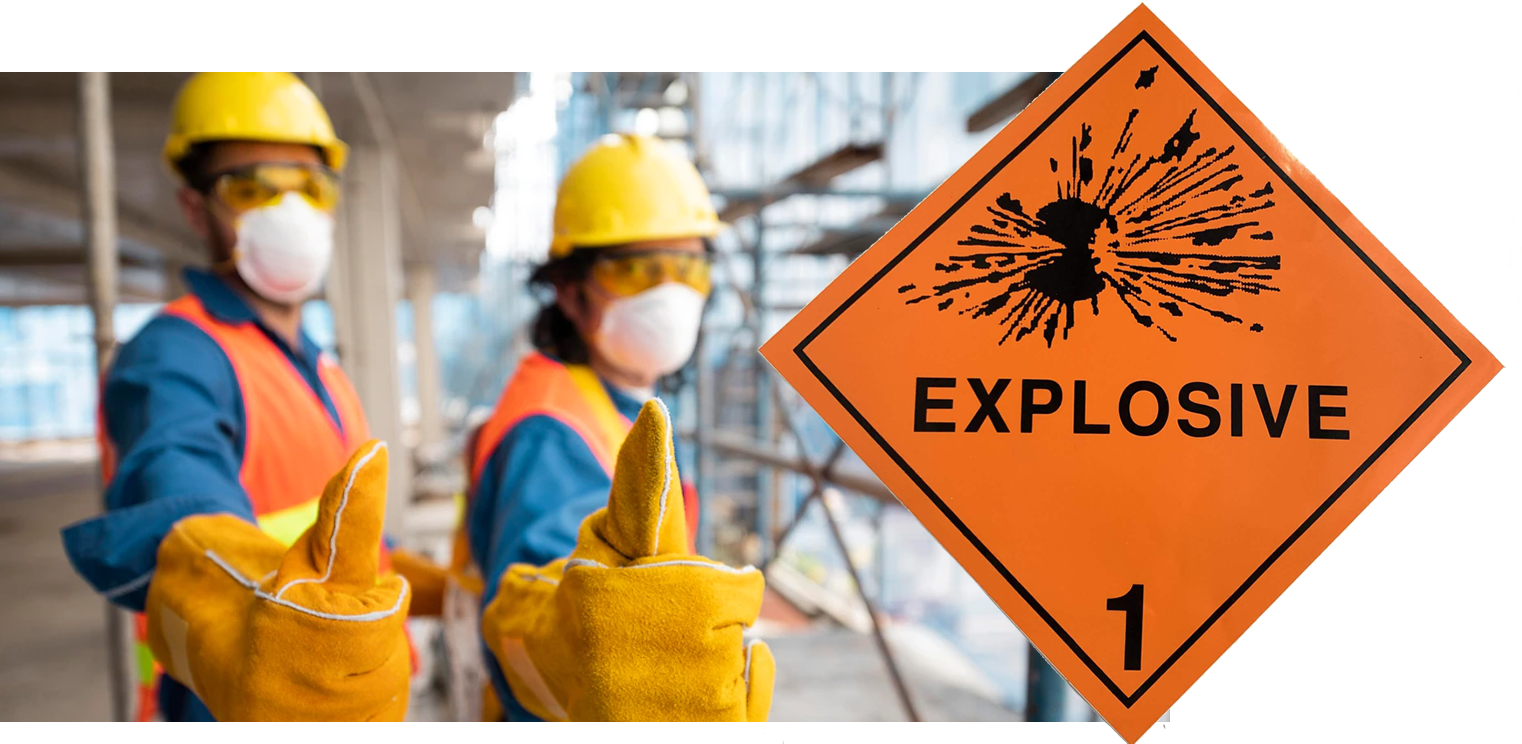Explosives are products that possess the ability to alight or detonate as a consequence of a chemical reaction. In Australia, explosives are classified into six divisions according to their level of danger. It’s important for business owners who handle explosives to be aware of these regulations, and what is required of them in order to transport and store these dangerous goods safely.
Class 1 Explosives are products that have the potential to be dangerous if not handled correctly. The six divisions of Class 1 Explosives are:
– Division 1.1: Mass Explosion Hazard
– Division 1.2: Projection Hazard
– Division 1.3: Fire Hazard
– Division 1.4: Minor Blast Hazard
– Division 1.5: Very Insensitive Explosives
– Division 1.6: Extremely Insensitive Explosives
Division 1.1: Mass Explosion Hazard
These are explosives that present a mass explosion hazard. This means that the explosive material is capable of causing a very large explosion, and that the entire charge will detonate almost simultaneously. This type of explosive is usually used in military applications, and is not often found in commercial or industrial settings.
Division 1.2: Projection Hazard
These explosives are designed to produce large amounts of shrapnel or debris when they detonate. They are often used in mining and construction applications, as they can be used to clear large areas quickly. As with Division 1.1 explosives, these products are not often found in commercial or industrial settings.
Division 1.3: Fire Hazard
Fire hazard Explosives are those that are likely to catch fire and burn vigorously when they come into contact with a ignition source. These products are often used in pyrotechnic applications, such as fireworks displays.
Division 1.4: Minor Blast Hazard
Minor blast hazard Explosives are those that produce a small explosion and minimal shrapnel or debris. These products are often used in commercial and industrial applications, such as blasting operations.
Division 1.5: Very Insensitive Explosives
Very insensitive explosives are those that are very difficult to ignite, and will not detonate if dropped or subject to minor impact. These products are often used in commercial and industrial settings, as they are considered to be safe to transport and store.
Division 1.6: Extremely Insensitive Explosives
Extremely insensitive explosives are those that are so difficult to ignite that they will only detonate if subject to a major impact or shock. These products are often used in military applications, as they are considered to be the safest type of explosive.
Business owners who handle explosives need to be aware of the dangers associated with these products, and must take steps to ensure that they are stored and transported safely. Explosives should always be stored in a cool, dry place, away from any ignition sources. When transporting explosives, businesses must use approved packaging and labeling, and must follow all relevant regulations.
If you’re responsible for handling explosives, it’s important that you understand the risks involved and take all necessary precautions. AIDGC representatives are qualified to advise business owners on their obligations under the Explosives Code, and can provide guidance on how to store and transport explosives safely. Contact us today for more information. To find an Explosive consultant in your state please visit our website.

